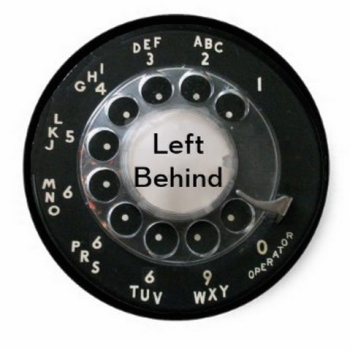The previous post ends by asking "What do you call it … when you say something you know is not true?"
One possible answer, other than "a lie," is "a trap street."
I first learned about this as a kid, when I inherited my older brother's ten-speed and a road atlas of Middlesex County. My best friend lived in one of two houses on a short street connecting two dead ends, like the crossbar of capital "H." The road atlas, however, showed another street connecting the dead ends further down the block, like a second crossbar across the bottom of the H. This street did not exist, but there it was on the map.*
We showed this to my friend's dad, who explained how such minor fictions are sometimes included on maps to trap copycats who might try to pass off this atlas as their own work. The repetition of such errors would be evidence that the copycats had stolen their work, demonstrating the real source of their imitation.
The same principle applies when tracing the provenance of spin and talking points. Key phrases serve the function of trap streets. The spin doctor introduces a novel phrasing for an inaccuracy, when the precise same wording of the precise same inaccuracy is found elsewhere, we know that this repetition was copied from the original because the false claim, like the street that isn't there, could not have arisen from independent observation of the real world.
Thus, to repeat the specific example from the previous post: this newspaper editorial is copied from this talking-points letter from the RNC. It contains the watermark, trap-street identifier, the misattribution of the phrase "slow bleed."
Unlike a cartographer, however, the spin doctor is all too happy to see his work copied and replicated and multiplied in this fashion, so the editorialists won't need to worry about getting sued for copyright infringement. They may need to worry about violating, and therefore losing, the trust of their readers, who probably expect more from them than acting as the trained-parrot subsidiary of the RNC, but that is a separate matter.
Thomas Nephew (via) points to a Saturday WaPo editorial along similar lines. That editorial parallels the Murtha-smearing of the RNC's memo — siding against both the former Marine and, strangely, their paper's own excellent reporting on "The Other Walter Reed" — but it doesn't repeat the tell-tale trap-street fictions that would identify it as stemming directly from the memo.
BarbinMD traces the spin cycle a bit further.
– – – – – – – – – – – –
* It's not the point of this post, but looking back on it, this was something of a significant revelation for me. The disparity between map and terrain forced me to make that distinction, and to recognize the possibility of that distinction, which wasn't something the fundamentalist church and school I attended were interested in recognizing.
But there I was, standing at the dead end of Glenwood Drive, looking at a line on a map that indicated a street that did not exist.
When forced, by a conflict between them, to choose between the text and the real world, I decided to go with the real world. I decided, in effect if not in these precise words, that this is what maps are for, this is what constitutes mapness. I didn't throw away my county atlas — the vast majority of it remained trustworthy, reliable and indispensable — but I decided, from there on, to treat maps as maps and not to try riding down streets that weren't really there.












